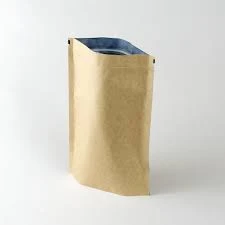- Afrikaans
- Albanian
- Amharic
- Arabic
- Armenian
- Azerbaijani
- Basque
- Belarusian
- Bengali
- Bosnian
- Bulgarian
- Catalan
- Cebuano
- chinese_simplified
- chinese_traditional
- Corsican
- Croatian
- Czech
- Danish
- Dutch
- English
- Esperanto
- Estonian
- Finnish
- French
- Frisian
- Galician
- Georgian
- German
- Greek
- Gujarati
- haitian_creole
- hausa
- hawaiian
- Hebrew
- Hindi
- Miao
- Hungarian
- Icelandic
- igbo
- Indonesian
- irish
- Italian
- Japanese
- Javanese
- Kannada
- kazakh
- Khmer
- Rwandese
- Korean
- Kurdish
- Kyrgyz
- Lao
- Latin
- Latvian
- Lithuanian
- Luxembourgish
- Macedonian
- Malgashi
- Malay
- Malayalam
- Maltese
- Maori
- Marathi
- Mongolian
- Myanmar
- Nepali
- Norwegian
- Norwegian
- Occitan
- Pashto
- Persian
- Polish
- Portuguese
- Punjabi
- Romanian
- Russian
- Samoan
- scottish-gaelic
- Serbian
- Sesotho
- Shona
- Sindhi
- Sinhala
- Slovak
- Slovenian
- Somali
- Spanish
- Sundanese
- Swahili
- Swedish
- Tagalog
- Tajik
- Tamil
- Tatar
- Telugu
- Thai
- Turkish
- Turkmen
- Ukrainian
- Urdu
- Uighur
- Uzbek
- Vietnamese
- Welsh
- Bantu
- Yiddish
- Yoruba
- Zulu
card stock thickness chart
A Comprehensive Guide to Card Stock Thickness
When it comes to crafting, printing, or any type of paper-based project, understanding card stock thickness is crucial. Card stock is a heavyweight paper often used in crafting, business cards, postcards, and a plethora of other creative projects. The thickness of card stock can significantly affect the finished product’s appearance, durability, and application. This article breaks down the importance of card stock thickness, providing a detailed chart and insights into how to choose the right type for your needs.
Understanding Card Stock Thickness
Card stock thickness is usually measured in points (pt) or grams per square meter (gsm). One point is equal to 0.001 inches, while gsm is a metric measurement that denotes the weight of paper per square meter. Typically, card stock thickness can range from 12 pt (approximately 200 gsm) to 24 pt (around 400 gsm) or more.
Here’s a basic overview of common card stock thicknesses and their typical uses
- 12 pt (200 gsm) This is one of the thinner types of card stock. It is often used for printing business cards, postcards, or invitations where a lightweight option may be desired.
- 14 pt (235 gsm) A popular choice for business cards and greeting cards, 14 pt card stock strikes a balance between durability and flexibility. It’s thicker than standard paper but still manageable for printing.
- 16 pt (270 gsm) This thickness is robust, making it suitable for professional business cards, thicker invitations, or even menu cards for restaurants. The extra thickness offers a premium feel.
- 18 pt (305 gsm) At this thickness, card stock is becoming quite substantial and is often used in high-quality printing needs, such as trading cards, product packaging, and promotional materials.
- 24 pt (400 gsm) The thickest commonly available card stock, 24 pt is used for applications that require maximum sturdiness, such as presentation folders, luxury business cards, and other premium products.
card stock thickness chart

Choosing the Right Thickness
The ideal thickness for your project depends largely on the intended use and the impression you wish to convey. Here are some tips
1. Consider the application For projects like printed business cards, consider how they will be used. If they will be handed out often, a thicker card may withstand wear and tear better.
2. Printing method Different printing methods may require different thicknesses. Some printers may only handle specific weights, so it’s essential to check the printing capabilities of your equipment or your print service provider.
3. Finish options The thickness of the card stock may also influence the types of finishes available. Thicker stocks may offer more options for coatings, such as matte, gloss, or silk finishes.
4. Budget considerations Generally, thicker card stock will cost more. If you're working on a project with budget constraints, balancing cost with the desired quality is key.
5. Personal preference Finally, personal choice plays a huge role. The tactile experience and visual appeal of a thicker card stock can leave a lasting impression on recipients, making it valuable in certain contexts.
Conclusion
Understanding card stock thickness is essential for anyone involved in printing or crafting projects. By referring to the card stock thickness chart and evaluating factors such as application, printing methods, and budget, you can make an informed decision on the best type of card stock to use. Whether you're creating business cards, invitations, or promotional materials, the right card stock thickness can enhance the quality and impact of your project. The choice you make not only reflects on the aesthetics of your item but also contributes to its functionality and durability, leaving a lasting impression on the audience you wish to engage.













